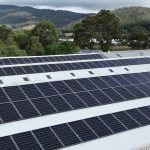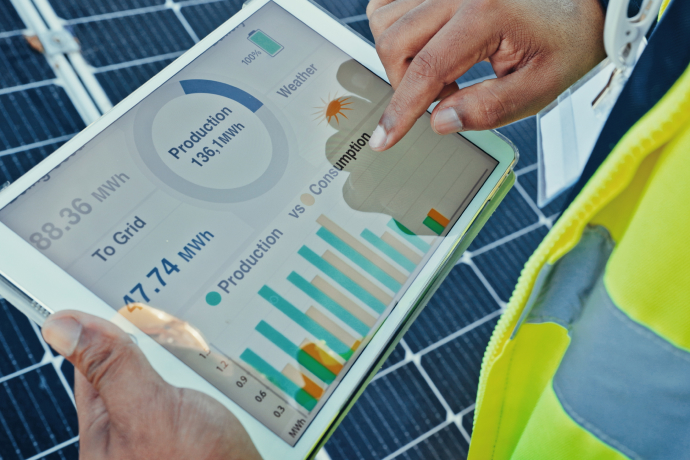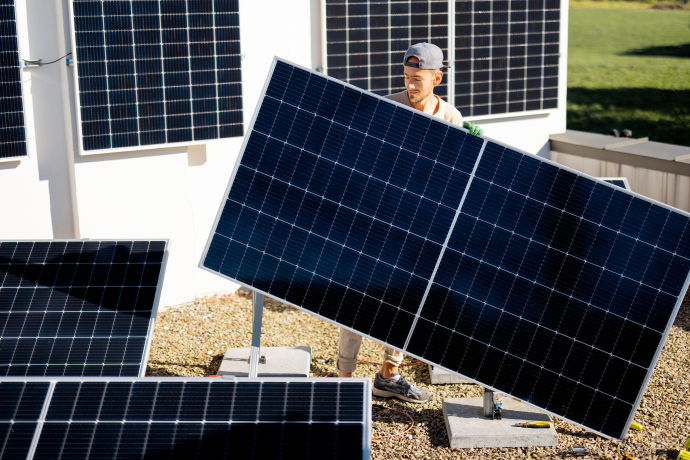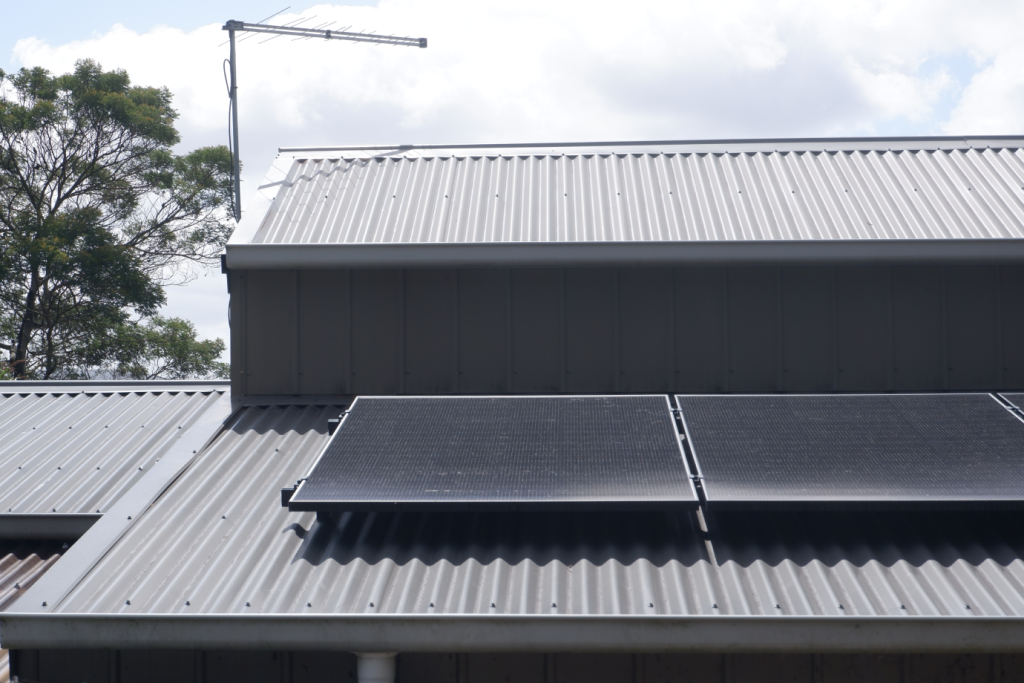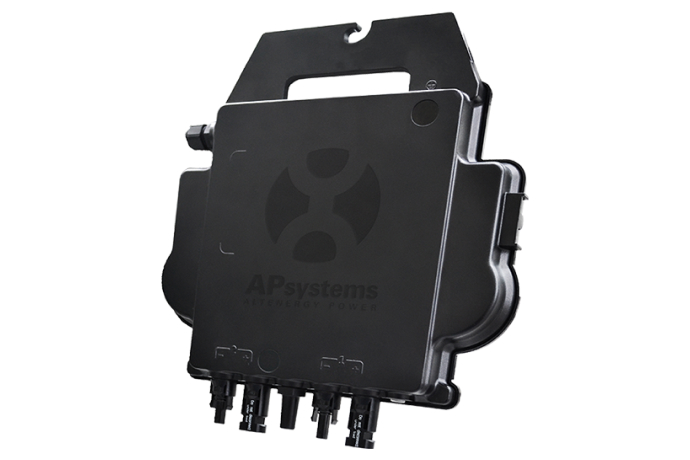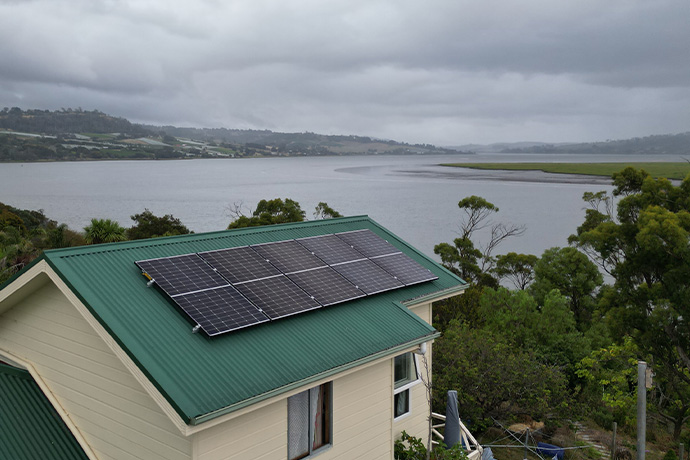
Understanding if solar panels work on cloudy days is important when considering installing a solar system, particularly in a more overcast area. You will be pleased to know that while solar panels require a certain amount of direct sunlight, they can still work on cloudy days or in challenging conditions. Our guide explains solar panel output in different conditions, the best solar panels for cloudy days, and how to improve solar panel efficiency.
What are Solar Panels?
Solar panels are devices made from silicon, or another semiconductor material installed in a metal panel and frame within a glass casing. These panels have photovoltaic cells that convert the sunlight to electricity.
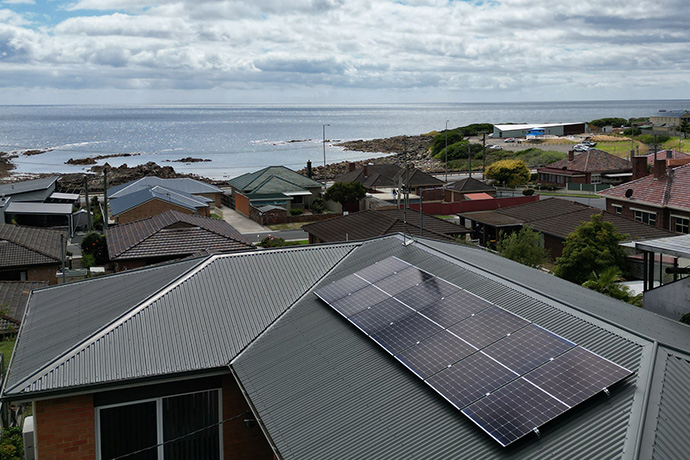
How Solar Panels Work
In order to understand if solar panels can work on cloudy days, we need to look at how they work to convert sunlight to electricity. This simple step by step guide explains how solar panels work to turn sunlight into electricity.
- Solar panels are installed. Solar panels are installed on the roof in a location that receives the most sunlight.
- Solar panels collect the sunlight. The sunlight hits the solar panel which is why it is important to place solar panels in the area with the least shade.
- Conversion of sunlight to electricity. Solar panels are made up of solar cells or photovoltaic cells. These cells absorb the sunlight and convert the light energy into electrical energy. The solar cells produce electricity when the light is absorbed and knocks electrons loose. These electrons then produce an electrical current, which is captured and transferred to the wires.
- Electric energy is converted. The electrical energy is called DC (direct current) and is not the type that powers most homes. It needs to be converted to AC (alternating current) and this is achieved by using an inverter. Solar systems have either one converter for the entire set of panels or individual microinverters which are attached behind the panels.
- Converted electricity powers the home. When the power is converted from DC to AC, it runs through the panels to power the home’s appliances. The system will automatically use the free electricity generated by the solar panels and switch back to the grid if needed.
The Impact of Conditions on Solar Panels
Solar panels require direct and indirect sunlight to operate efficiently. As a renewable energy resource that is reliant on a level of sunshine, things like cloud, rain and shade can impact how well solar panels work. Let’s take a look at how these conditions affect solar panel efficiency, how to maximise energy output and the best panels for cloudy days.
Solar Panels and Cloudy Days
While solar panels work most efficiently with direct sunlight, they can still work on cloudy days where there is indirect sunlight. Cloudy conditions don’t alter the solar wavelengths hitting the panels but scatter them so they are less intense. This less intense sunlight reduces solar energy efficiency, given solar panels rely on direct sunlight for maximum output. Depending on how thick the cloud cover is and the quality of the panels, solar panel output may be reduced by 10 to 25%. A good way to gauge the level of cloud and how it might impact your solar panels is to look up at the sky and see how the sunlight affects your eyes because solar cells work on the same wavelength as our eyes. If the sun is behind a thin cloud but still too bright to look at, solar production will be minimally affected. Thick dark clouds where there is no sign of sunshine indicates a higher reduction in solar productivity.
Interestingly, while solar production works best with direct sunlight, solar panel performance actually deteriorates when it is too hot. Extreme heat severely reduces the solar panels ability to produce energy, because the electrons that generate electricity inside the unit do not respond well to above average temperatures. It causes them to bounce around too much which reduces the voltage and the amount of energy created. Given that solar panels actually work less efficiently in extreme heat, cloudy locations can be a bonus rather than a drawback.
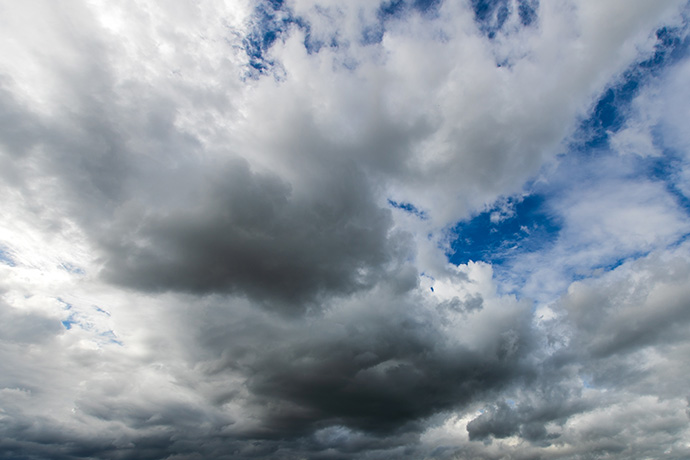
How to Maximise Solar Efficiency on Cloudy Days
If you live in an area prone to clouds, or want to know how to maximise solar energy production on cloudy days, there are various ways to do that. The following explains how to maximise solar efficiency on cloudy days.
-
- Install a bigger system: The more panels you have, the more electricity the system will produce. If you live in an area with a lot of clouds, having an oversized solar system will produce more energy. The bigger the system, the more panels to produce electricity with fewer hours of sunlight per day.
- Choose high efficiency panels: High efficiency panels are panels that convert more sunlight into electricity compared to standard or low efficiency panels. They produce more electricity and are ideal for cloudy environments. On average, the efficiency of high efficiency panels is as much as 23% conversion, with lows sitting around 12%.
- Invest in a home battery system: By investing in a home battery system, you will be able to store any surplus electricity created by the solar panels for a later time. You can store excess power when the sun is shining and use it later on cloudy days.
- Install micro inverters: Micro inverters help to get the most out of each solar panel, even on cloudy days. Because the micro inverter is attached to the back of each solar panel, it optimises the ability for individual solar panels to produce energy, even in cloudy conditions.
- Optimal direction and orientation: By facing solar panels in the correct direction and orientation, it will improve the amount of sunshine the panels receive. In the southern hemisphere, solar panels should be facing due north for maximum sunlight exposure. The best orientation is at a 30 to 45 degree angle as this ensures that the solar panels are close or equal to the latitude of your home. Tasmanian panels should face north with an angle of 26 to 37 degrees.
- Regular cleaning and maintenance: Making sure your solar panels are well maintained and cleaned makes a big difference to their ability to produce electricity. Well maintained panels require regular servicing every two years to ensure optimum performance. Cleaning the panels will remove any dirt or debris that has accumulated and might impact the ability of sunlight to hit the solar cells.
Best Solar Panels for Cloudy Days
Some solar panels are more suited to a cloudy location. Advancements in technology have led to solar panels that perform well in low sunlight conditions. These panels include:
-
- Monocrystalline Silicon: These panels are known for their high efficiency, upwards of 20 to 22%, allowing it to generate more electricity using the same amount of sunlight compared to others.
- Polycrystalline Silicon: While these are slightly less efficient than monocrystalline, they have a higher output than standard panels, with a medium efficiency rating of about 15 to 17%.
- Bifacial: Thes highly efficient solar panels produce solar from both sides of the panel. When installed on a highly reflective surface, they can create up to 30% increase in production than traditional panels. If you live in a cloudy area, you will be more likely to meet your energy needs with a high efficiency panel like this.
Solar Panels and Rain/Snow
Rain drops do not affect solar panel efficiency directly except that with rain there has to be clouds. If it is particularly heavy rain, it usually coincides with thick, dark clouds which will affect solar panels. The best rain for solar panels is a light sunshower when the solar energy is still able to hit the panels. On a positive note, rain can actually help solar panel efficiency as it regularly helps to wash away dust and debris from the panels and improve performance.
Similarly, a light dusting of snow has little impact and can be easily blown away by wind or melt to clean the panels. Heavy snowfall that settles on the panels can prevent the panels from generating power. However, the combination of the tilt of the panel and warmer surface temperature usually makes the snow slide off and melt away.

How to Maximise Solar Efficiency in Rain/Snow
Solar panels can still work effectively even in areas that are prone to rain or snow. Here are a few tips to maximise solar efficiency in a location prone to these conditions.
-
- Choose monocrystalline panels: These high efficiency panels are the best forareas that are more prone to rain or snow. Using advancements in technology, these panels need less sunlight to convert solar energy into electricity.
- Oversize the solar system: If you live in an area with a lot of rain or snow, install a system that is larger than you need to compensate for the lower solar input.
- Keep shadows away: To maximise the amount of sunlight in a rainy or snowy area, keep your solar panels free from shadows. With forward thinking on where to place the panels, ensure they are free from trees and other objects that can cause shadows.
Solar Panels and Shade
Solar panels rely on sunlight to produce electricity, so shading can have a significant impact on their energy production. Whether it is trees or another building, shading is an obstruction that blocks the sunlight and will impact solar panel efficiency. The level of impact will vary based on the amount of shading on the roof. If a roof is completely shaded, solar panels will not work as they will have no direct contact with sunlight. Partially shaded roofs, on the other hand, can still produce some solar energy. When installing solar panels it is crucial to minimise shade as much as possible to get the maximum benefit from your solar system.
How to Maximise Solar Efficiency in Shade
If you do have a partially shaded roof, there are ways to maximise solar efficiency. These include:
-
- Careful panel placement: Make sure that panels are placed in the least shady area. That means assessing everything from neighbouring buildings to trees and future growth. Aim for a position for the panels with maximum sunlight exposure and minimum obstruction.
- Use bypass diodes: On a roof that is partially shaded, bypass diodes allow the current to bypass the shaded area. This ensures that the performance of the system is not hurt by reducing power loss.
- Trim trees and foliage: Carefully trim trees and foliage to minimise shading while taking into account the health and wellbeing of the trees.
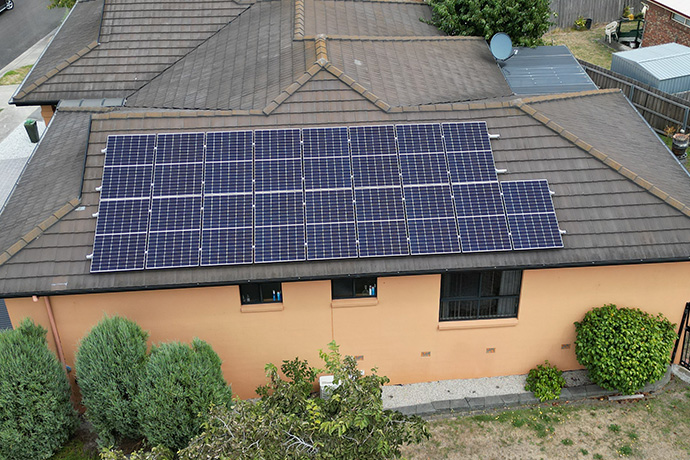
Solar panels continue to work on cloudy days or overcast weather and can produce a significant amount of energy. However, the amount of cloud cover will impact the level of electricity produced. We have explained how weather conditions and shade can affect solar systems, and provided useful tips like regular cleaning and installing high efficiency panels to help improve solar panel performance on overcast days. Contact the team at TSS who can design a solar system that is perfectly suited to your location and weather conditions.


